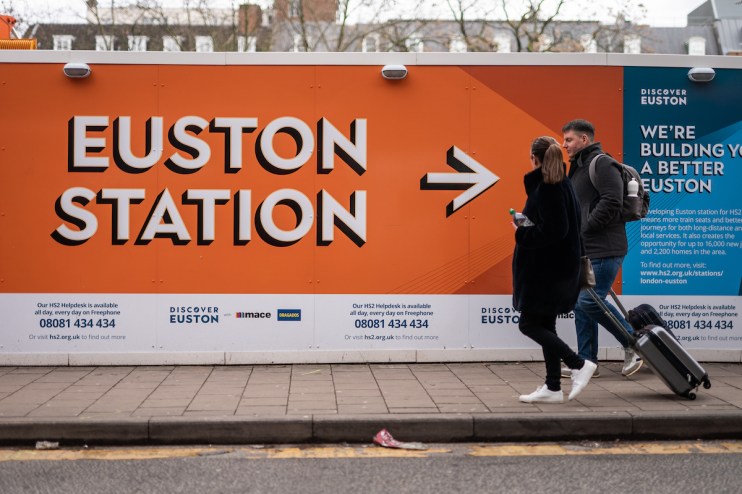HS2: Cancelling London Euston section would pile pressure on Elizabeth Line, advisers warn

Cancelling the Euston section of HS2 would leave Londoners too reliant on an already struggling Elizabeth Line, government advisers have warned.
The National Infrastructure Commission said failure to terminate the route at Euston presented a “resilience risk” in the case of disruption or closure of the Elizabeth Line, “as there are fewer alternatives at Old Oak Common for onward travel.”
“If High Speed 2 terminated permanently at Old Oak Common, this would further increase the number of users on the Elizabeth Line travelling east to London, limiting its potential to support wider passenger growth in future.”
Prime Minister Rishi Sunak sparked national controversy in October when the government cancelled the northern section of HS2 amid ballooning costs.
Alongside ongoing doubt and delay surrounding the Euston terminus in Central London, it became a real risk that HS2, the budget for which is now north of £100bn, would only run from Birmingham to Old Oak Common in the UK capital’s Western suburbs.
“The necessary funding must now be secured for the tunnelling from Old Oak Common to Euston to avoid incurring greater costs from stopping and restarting work,” the NIC wrote.
“Permanently terminating High Speed 2 services at Old Oak Common has not been planned for and would provide poorer connectivity to many onward destinations in London.”
It was reported earlier this week that the government had found a way to fund the 4.5 mile tunnel required for the link. This has yet to be officially confirmed but the report suggested taxpayers would be forced to dish out over a billion despite a prior pledge private investors would deliver the funding.
Warnings over extra pressure on the Elizabeth Line come amid ongoing issues with delays and cancellations through its post-honeymoon period.
Data in September from the Office of Rail and Road found the Elizabeth Line had a higher cancellation rate between July and August than any other train service in the UK.
Persistent disruption in recent months has threatened to take the shine of a remarkably successful first year in operation.
Damage to overhead power cables and track upgrades along the route, which is overseen by Network Rail, have caused issues since the end of last year. London Mayor Sadiq Khan warned in January the Elizabeth Line had “not met” standards expected by Londoners.
Issues with rail infrastructure have simultaneously plagued the West Coast Mainline, which provides connecitivty between London, Birmingham, the North West and Scotland and is the busiest rail freight corridor in the UK.
Following the cancellation of HS2’s northern leg, the NIC warned a “do nothing” scenario for the route north of Handsacre, HS2’s new terminus, is “not sustainable” as passenger demand grows over the long term.
“It is already running at a higher intensity of operation than major fast lines in other European countries, impacting reliability,” the NIC said in its annual review of British infrastructure.
Bottlenecks between Manchester and Birmingham, such as Colwich junction, Crewe and the southern approach to Manchester, are limiting capacity growth, preventing any growth in passenger numbers without additional infrastructure investment.
“The government should maximise the benefits from High Speed 2 infrastructure between London and Birmingham by examining options to increase capacity north of Birmingham,” the NIC said.